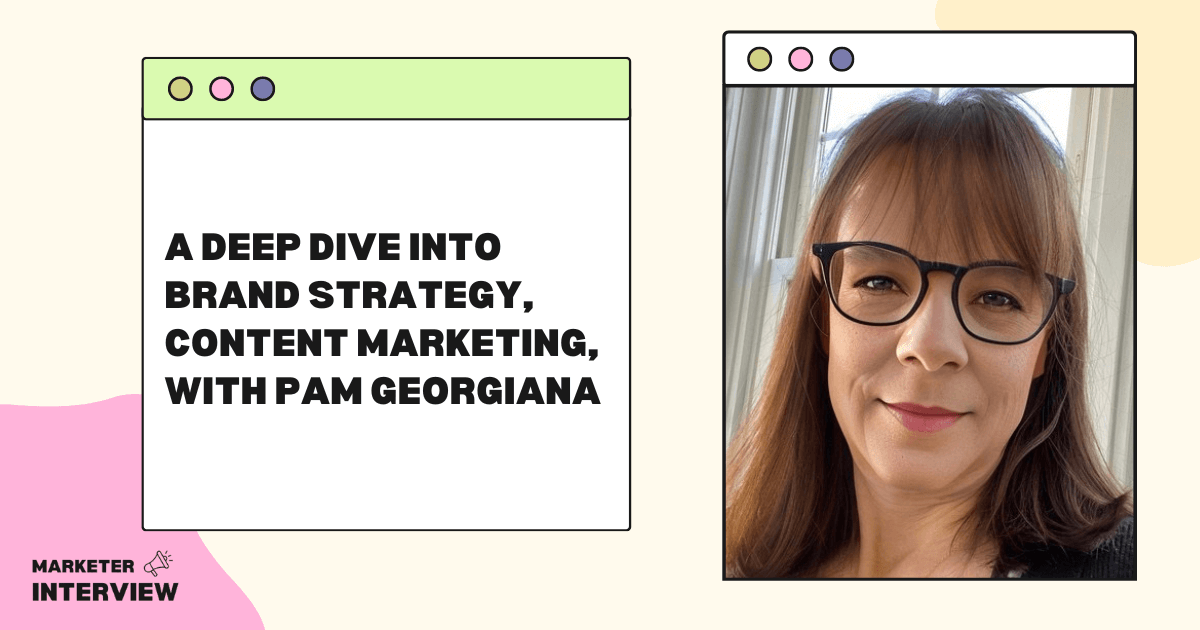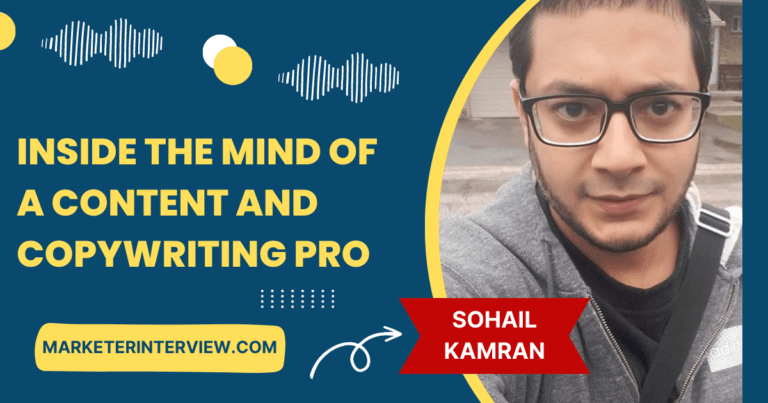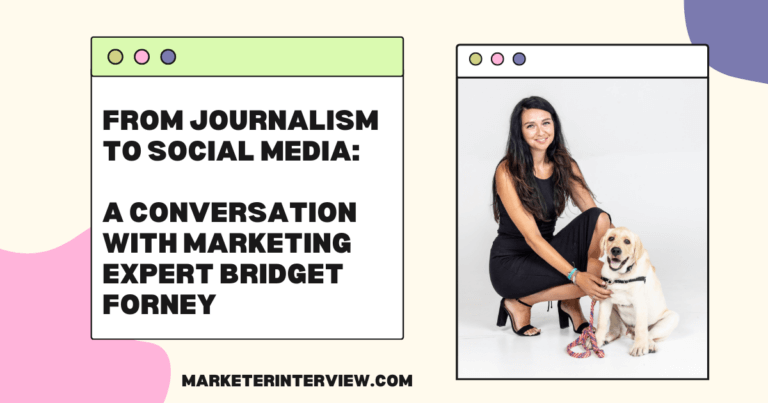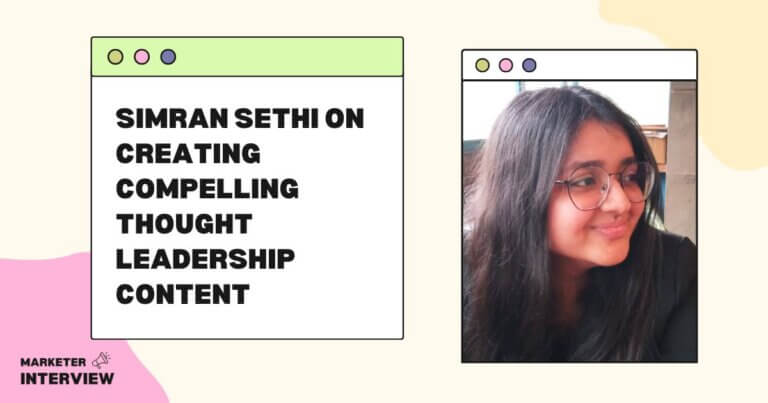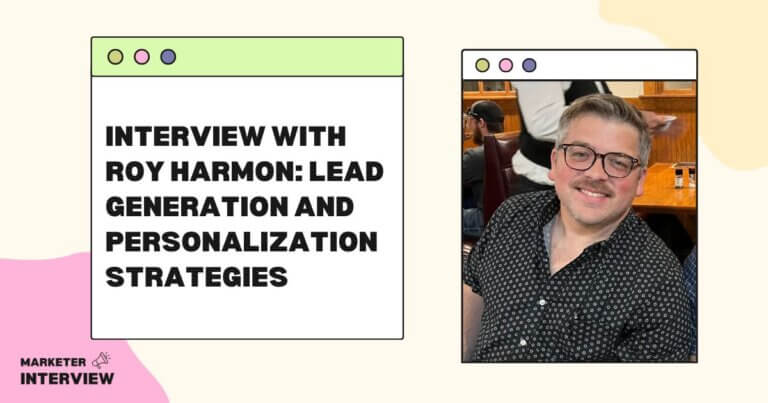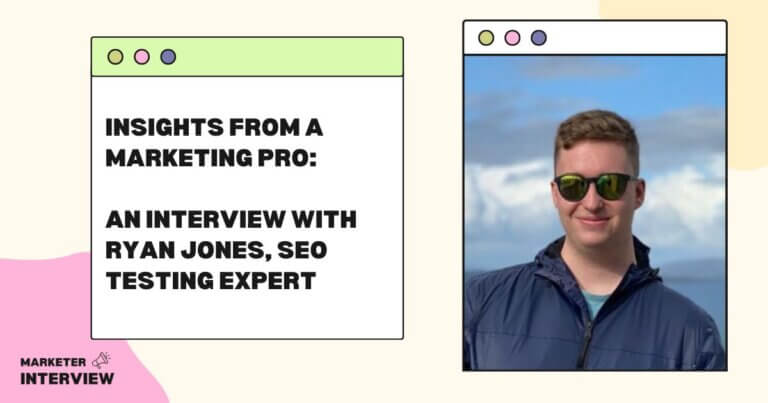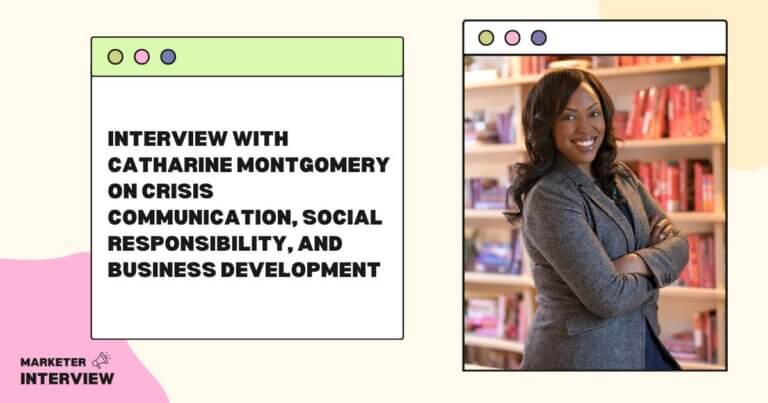A Deep Dive into Brand Strategy, Content Marketing, with Pam Georgiana
Welcome to another exciting edition of Marketer Interview!
In today’s spotlight, we have the privilege of diving into marketing, brand strategy, and entrepreneurship with the remarkable Pam Georgiana.
With an extensive background in crafting compelling narratives and strategic marketing campaigns, Pam’s journey is a testament to the power of creativity and innovation in the marketing landscape.
As an advocate of long-form thought leadership and brand storytelling, she’s been passionately shaping perceptions and driving engagement in the digital realm.
Let’s jump into her unique perspective on brand strategy, content marketing, and the exciting world of entrepreneurship.
Contents
- 1 Can you share how you first entered the marketing world and discovered your passion for brand strategy and content marketing?
- 2 Your specialization in long-form thought leadership and marketing content is intriguing. Could you elaborate on how you developed this specialization and its importance in today’s content-driven landscape?
- 3 Your approach to presenting brands as solutions to problems is fascinating. Can you walk us through an example where you effectively transformed a brand’s narrative to resonate with its target audience?
- 4 Building strategic content marketing campaigns requires a deep understanding of creativity and analytics. How do you balance these two aspects to drive brand awareness and profitability?
- 5 Your ability to craft well-written and creative content is undoubtedly a valuable asset. Could you share your top strategies for consistently producing engaging content that captures the audience’s attention?
- 6 Entrepreneurship is often a challenging journey. What motivated you to embark on self-employment, and how has this decision influenced your approach to marketing and brand strategy?
- 7 In the dynamic field of marketing, trends, and technologies evolve rapidly. What recent trends or shifts have you observed in brand strategy and content marketing, and how do you adapt to stay ahead?
- 8 Could you shed light on your process of developing comprehensive brand consulting strategies? How do you identify and address the unique needs of diverse brands to ensure a successful engagement?
- 9 The use of tools and software can significantly impact a marketer’s effectiveness. Are any specific tools or software you find indispensable for your work, particularly in strategic campaign creation and content development?
- 10 Long-form content creation requires meticulous planning. What steps do you take from ideation to execution to produce compelling, in-depth content that resonates with your target audience?
- 11 Your journey is an inspiring example for aspiring marketers and entrepreneurs. What advice would you give those looking to establish themselves in brand strategy, content marketing, and entrepreneurship?
My path to marketing was circuitous.
I studied restaurant management in college to own my restaurant. And I did – a coffeehouse very much like Central Perk in Friends. This was the late 1990s in suburban Cleveland.
Back then, coffee was instant, Folgers, or powdered “lattes” from the gas station. My coffeehouse was ahead of its time. I found it challenging and fun to use content marketing techniques like events and speaking gigs to educate the community about coffee. This was before social media or blogs. Ultimately, my coffeehouse wasn’t successful enough to keep me fed and clothed.
Still, I learned some precious brand lessons. After I closed my business, I decided to pivot my career into marketing. I went to work for the local Borders Books and Music as their community relations coordinator. I took all the relationships I made and the marketing lessons I learned as a business owner and used them to make the bookstore successful.
I went from being responsible for one store to six and then moved to the home office to plan events for stores nationwide. Content was king in this marketing department because that was, in essence, what we were selling.
I learned to use the stories in books and the stories of people who love books to promote the brand. I got even more experience using storytelling to promote a brand at Bath & Body Works, where every product is designed to enhance a customer’s life in very personal ways.
Then, as the Vice President of Engagement at a regional nonprofit, I successfully led their rebrand, which gave me a lot of tactical experience. I learned how important it was to get the brand right. It’s been a circuitous route to where I am today.
Still, the lessons I’ve learned, the challenges I faced, and the varied work settings have offered me a 360-degree view of the power of content marketing and brand building.
Your specialization in long-form thought leadership and marketing content is intriguing. Could you elaborate on how you developed this specialization and its importance in today’s content-driven landscape?
Because I am a storyteller and love to research, long-form thought leadership made sense to hone in on because it allows me to use traditional storytelling techniques to highlight educational information.
I focus on B2B content, a growing thought leadership market. B2B marketers are realizing that people buy B2B products, and the content marketing techniques (like storytelling) that work for B2C could also work for B2B.
Case studies, white papers, articles, and e-books do not have to be dry reads full of statistics and citations. B2B content can be actionable, convey new ideas and insights, and show value to readers.
Your approach to presenting brands as solutions to problems is fascinating. Can you walk us through an example where you effectively transformed a brand’s narrative to resonate with its target audience?
A 100+-year-old social service nonprofit asked me to help them update and modernize their traditional brand identity. Their donors and volunteers were aging and weren’t nurturing enough new donors to replace them.
I led the team that created and implemented the new brand, which included a complete revamp of their messaging platform to focus more on donors and volunteers than on the agency itself.
In the past, the messaging centered on how the agency’s services helped clients. For example, an e-appeal headline could be “XXX homeless shelter saves 100 lives every month.”
The new messaging focused on how donors and volunteers can help clients. So, the headline becomes, “YOU can help save 100 lives every month.” This shift put the donors and volunteers in the spotlight and showed them firsthand how vital their support is.
This messaging shift was used throughout all internal and external communication channels (so it became part of their culture) and supported by a more modern and inclusive visual identity. Over time, the rebrand helped to build the agency’s new donor and volunteer rosters and boost annual revenue.
Building strategic content marketing campaigns requires a deep understanding of creativity and analytics. How do you balance these two aspects to drive brand awareness and profitability?
Analytics should always inform creativity.
Creativity needs a solid foundation in audience understanding. Use data analytics to create detailed buyer personas, segment your audience, and gather insights into their preferences, pain points, and behavior. This information will help tailor your creative content to resonate with your target audience. Analytics can also provide valuable insights into what type of content and distribution channels have performed well.
Consistently producing engaging content requires a thoughtful approach that considers the audience’s preferences, current trends, and the brand’s uniqueness.
I focus on creating content that adds value, solves problems, entertains, or educates the audience. I ensure my content is well-researched, accurate, and provides a unique perspective.
Stories have the power to captivate and connect emotionally with an audience. I use traditional storytelling arcs to weave narratives the audience can relate to. This often involves identifying the audience’s everyday problems and providing solutions through the content.
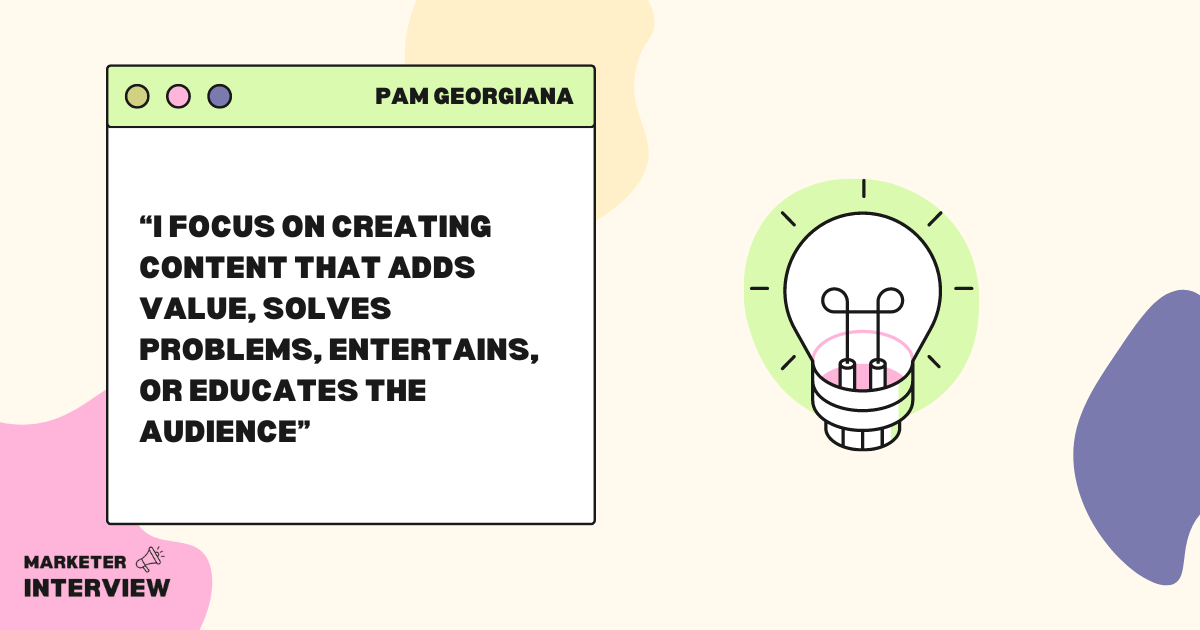
Entrepreneurship is often a challenging journey. What motivated you to embark on self-employment, and how has this decision influenced your approach to marketing and brand strategy?
I have always been an entrepreneur at heart.
My first business was selling doughnuts to my neighbors when I was 8 or 9. I was relentless. I’d show up at their door every day until they bought some.
After my coffeehouse closed and I went to work in marketing departments, I always knew I’d get back to self-employment someday. I started freelancing as a side gig, partly to make extra money and because I found it fun. I knew that, eventually, the side gig would turn into more.
Being a full-time content writer would be a great “retirement” plan. Then, the pandemic and leadership changes at my job made me rethink my priorities. The full-time part of the entrepreneurship plan started before the retirement part, but I’m happy it did. I’ve been able to add brand and content marketing strategy to my services and expand my client base, setting myself up for an even better future.
In the dynamic field of marketing, trends, and technologies evolve rapidly. What recent trends or shifts have you observed in brand strategy and content marketing, and how do you adapt to stay ahead?
AI (Artificial Intelligence) has significantly impacted content marketing by transforming various aspects of the content creation, distribution, and analysis processes.
AI-powered tools can generate articles, blog posts, and product descriptions based on prompts. While unsuitable for all types of content, they can help speed up content creation by researching, creating outlines, and suggesting topics based on trends and keywords.
Personalization through AI and marketing automation is also a trendsetter in brand strategy and content marketing. These tools can personalize real-time content based on user behavior, preferences, and past interactions. This ensures that users see relevant content, enhancing engagement by putting the user at the story’s center.
AI content tools like ChatGPT are helpful for research and topic creativity but not content creation. They simply cannot produce content that sounds like a human writes it.
However, I stay ahead of the updates and innovations by using them for more straightforward tasks. That way, I am aware of their capabilities.
Could you shed light on your process of developing comprehensive brand consulting strategies? How do you identify and address the unique needs of diverse brands to ensure a successful engagement?
Each brand consulting project is unique.
My process starts with a deep dive into the existing brand, including the history, mission, purpose, vision, target audience, products and services, stakeholders, visual identity, messaging channels, marketing campaigns, and long-term strategic plans and goals.
I involve as many stakeholders (management, staff, customers, etc.) in the research process. The results of this research will inform the rest of the project.
The use of tools and software can significantly impact a marketer’s effectiveness. Are any specific tools or software you find indispensable for your work, particularly in strategic campaign creation and content development?
No specific tools come to mind. I use various tools but do not rely on any of them.
Long-form content creation requires meticulous planning. What steps do you take from ideation to execution to produce compelling, in-depth content that resonates with your target audience?
Creating compelling long-form content involves ensuring it resonates with the target audience and provides them with valuable insights. Here’s a step-by-step list for writing a blog, article, ebook, or long-form content.
1. Define Purpose and Goals: Clearly articulate the purpose of your long-form content. Are you educating, entertaining, inspiring, or solving a problem? Set specific goals for the content, such as driving traffic, increasing engagement, or establishing thought leadership.
2. Audience Research: Understand the target audience’s demographics, interests, pain points, and preferences.
3. Topic Ideation: Brainstorm topics that align with the purpose, goals, and audience interests. Look for gaps in existing content, emerging trends, or problems the target audience needs to solve.
4. Keyword Research: Conduct keyword research to identify relevant search terms and optimize content to attract organic traffic.
5. Content Structure and Outline: Create an outline that includes main points, subtopics, and key takeaways. Make sure the content flows and is easy to follow.
6. Research and Data Collection: Gather data, statistics, case studies, and examples to support your points. Find authoritative sources to enhance the credibility of your content.
7. Create an Engaging Introduction: Craft an introduction that hooks the reader and outlines what they can expect from the content. Communicate the value readers will gain from the content.
8. Write Original and Insightful Content: Write in-depth and authoritative content that thoroughly covers the topic. Use storytelling, anecdotes, and examples to make the content relatable. Offer unique insights, perspectives, or solutions that set your content apart from what’s already available.
9. Visual Enhancements and Data Visualization: Incorporate visuals such as images, infographics, and graphs to break up the text and enhance understanding. Present data using charts, graphs, and diagrams to make complex information easier to understand.
10. Cite Credible Sources: Back up the content with reputable sources and include proper citations to build trust with the audience.
11. Enhance Readability: Use H1s, H2 subheadings, bullet points, and short paragraphs to improve readability. Break down complex ideas into digestible chunks.
12. Edit and Proofread: Edit the content for clarity, coherence, and grammar. Proofread to catch any errors or typos before publishing. Match the reading level for the content to the audience.
13. Create a Promotion and Distribution Strategy: Plan to promote the piece across various channels, including social media, email, and relevant online communities.
14. Measure and Optimize: Use analytics to track engagement metrics, like bounce rate, social shares, comments, and time on page. Gather feedback from the audience and use insights to refine content strategy
15. Engagement and Interaction: Encourage readers to leave comments, share their thoughts, or ask questions in a comments section.
The key to compelling long-form content is to provide value, depth, and originality. Your content should address the needs of your audience, offer fresh perspectives, and showcase your expertise.
Through careful planning and execution, you can create content that resonates with your target audience and establishes your brand as a trusted source of information.
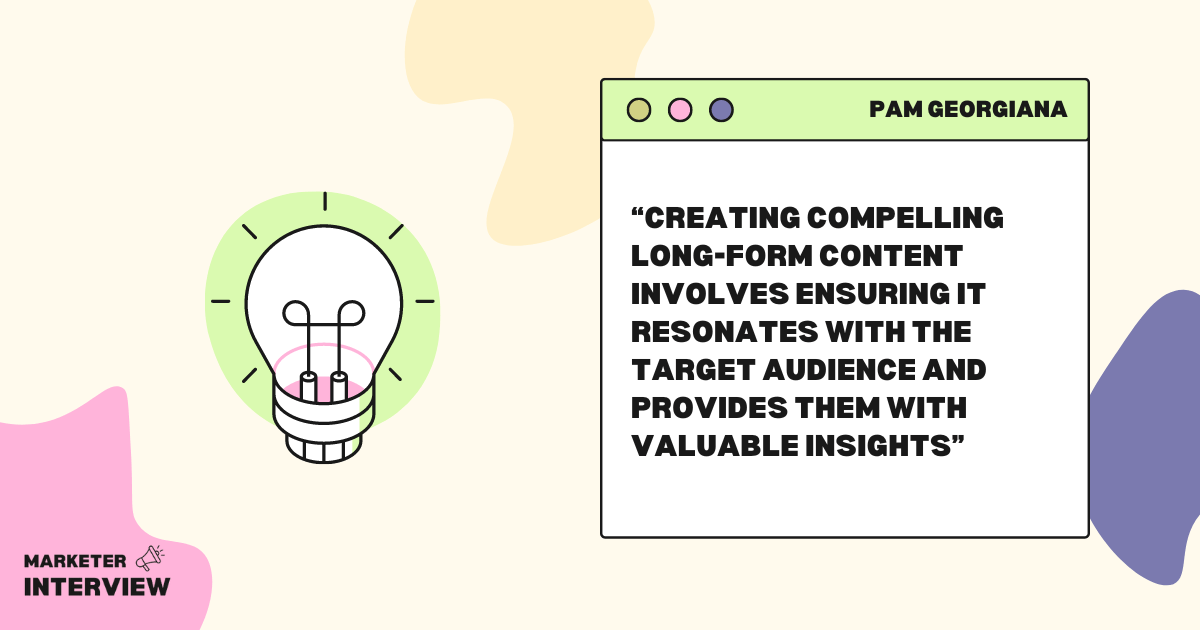
Your journey is an inspiring example for aspiring marketers and entrepreneurs. What advice would you give those looking to establish themselves in brand strategy, content marketing, and entrepreneurship?
It takes a special kind of person to be an entrepreneur.
In many ways, it’s a high-wire act. You’re up in the air alone, spinning multiple plates and trying not to fall. It takes grit, determination, and guts. There’s no steady paycheck, 9 to 5 work hours, no PTO, and no guarantee of success.
That being said, it’s also exhilarating, fascinating, thrilling, and fun. If you’ve got the stomach for the risk involved, go for it!
Content marketing and brand strategy positions are sometimes available in larger organizations. Still, in many cases, these tactics are part of a general marketing manager or director position.
More and more companies understand the power of content marketing and are using content to drive marketing goals. Many content marketers start as copywriters or social media creators. Branding positions are sometimes found on product development teams where brand strategists help to build brands around new products or verticals.
When starting a marketing career, there is no right or wrong avenue. All roads will lead to success if you know what you want and work hard to get there.
